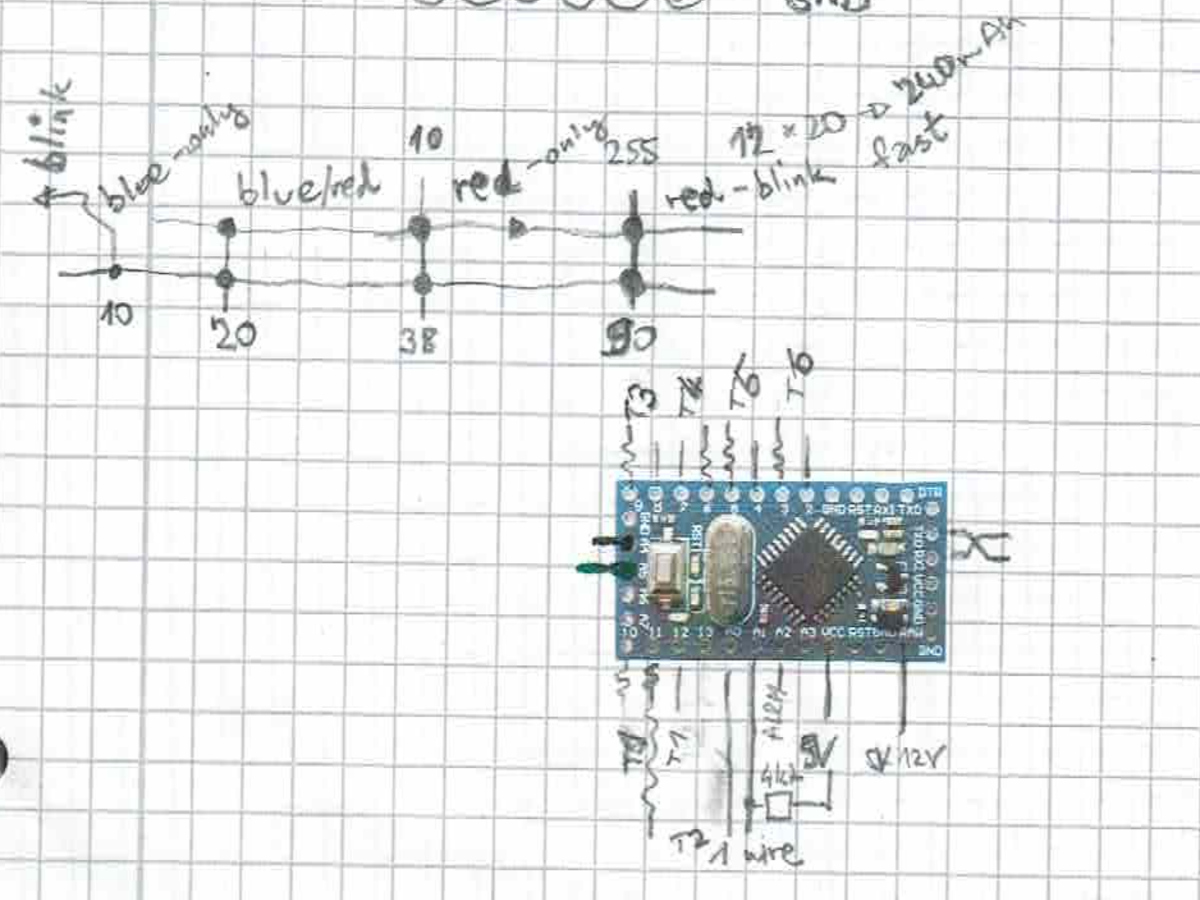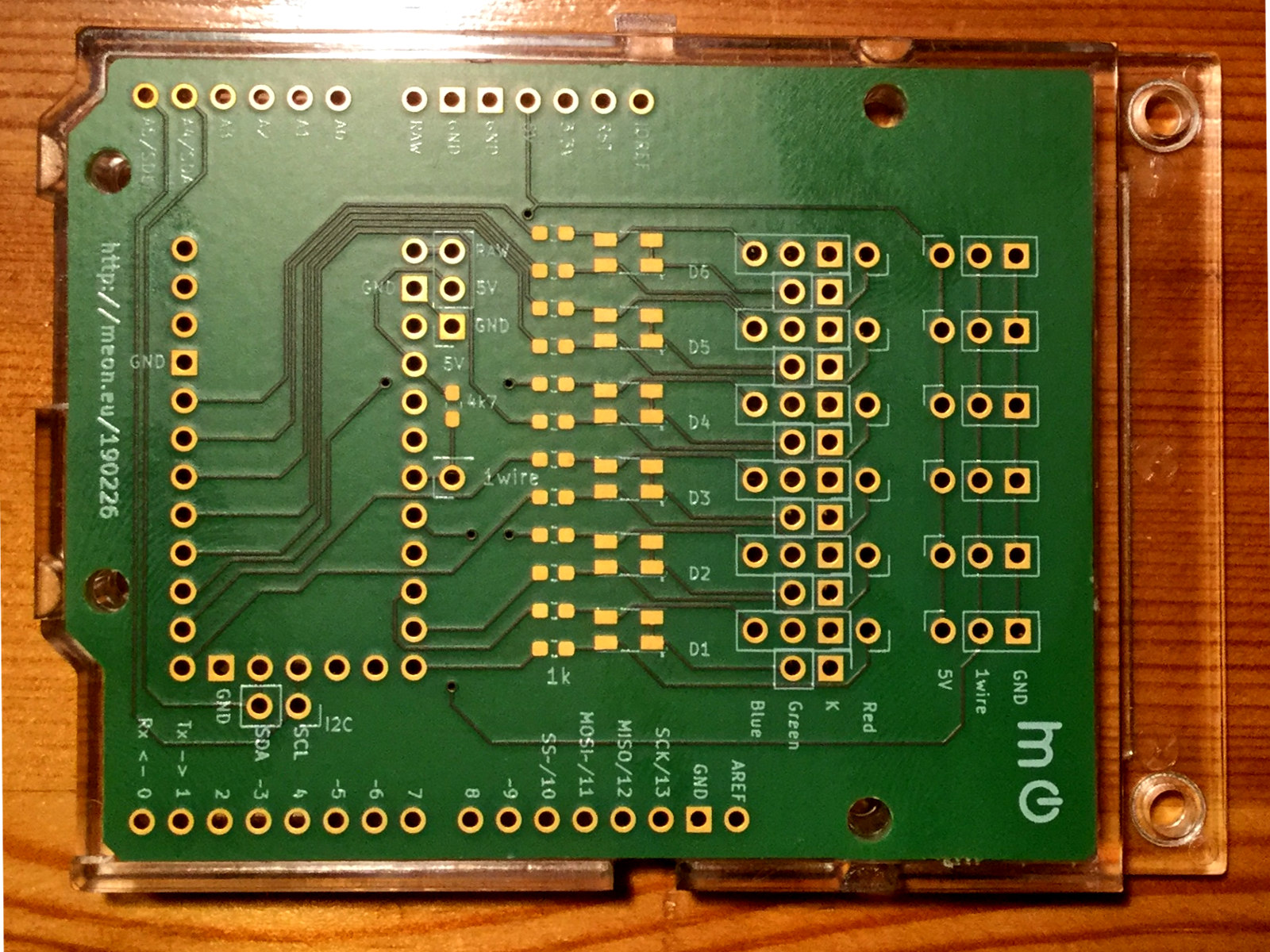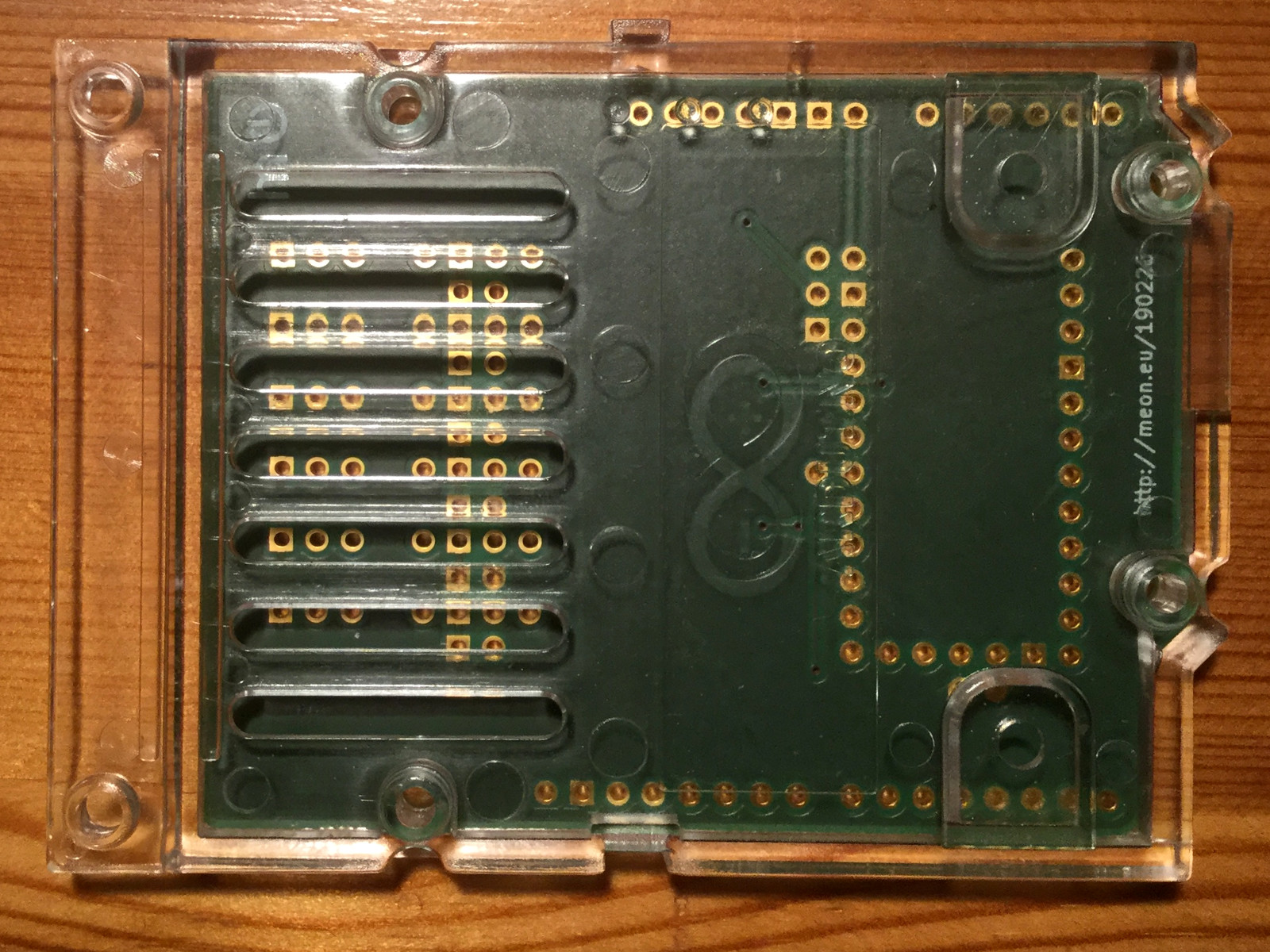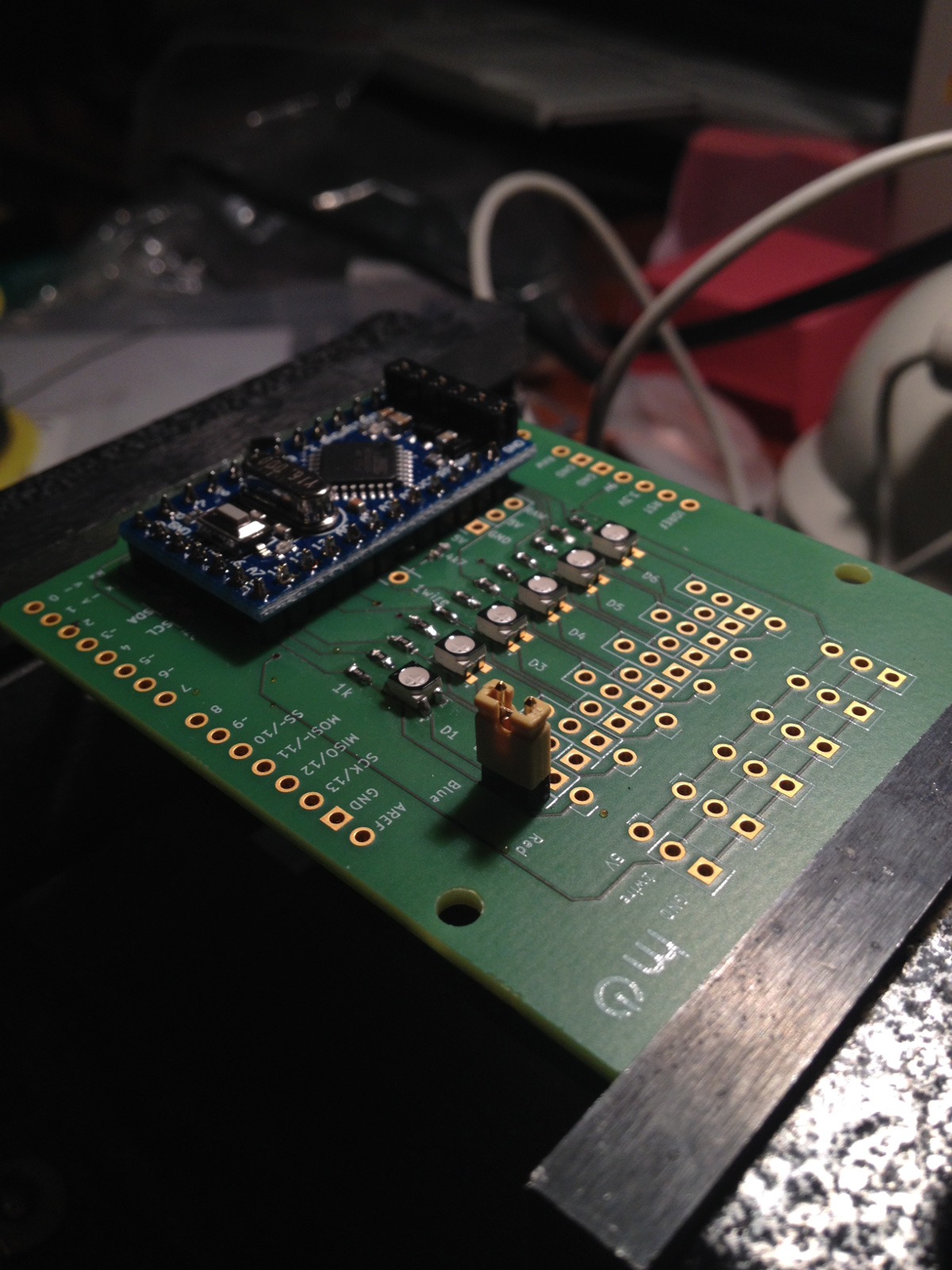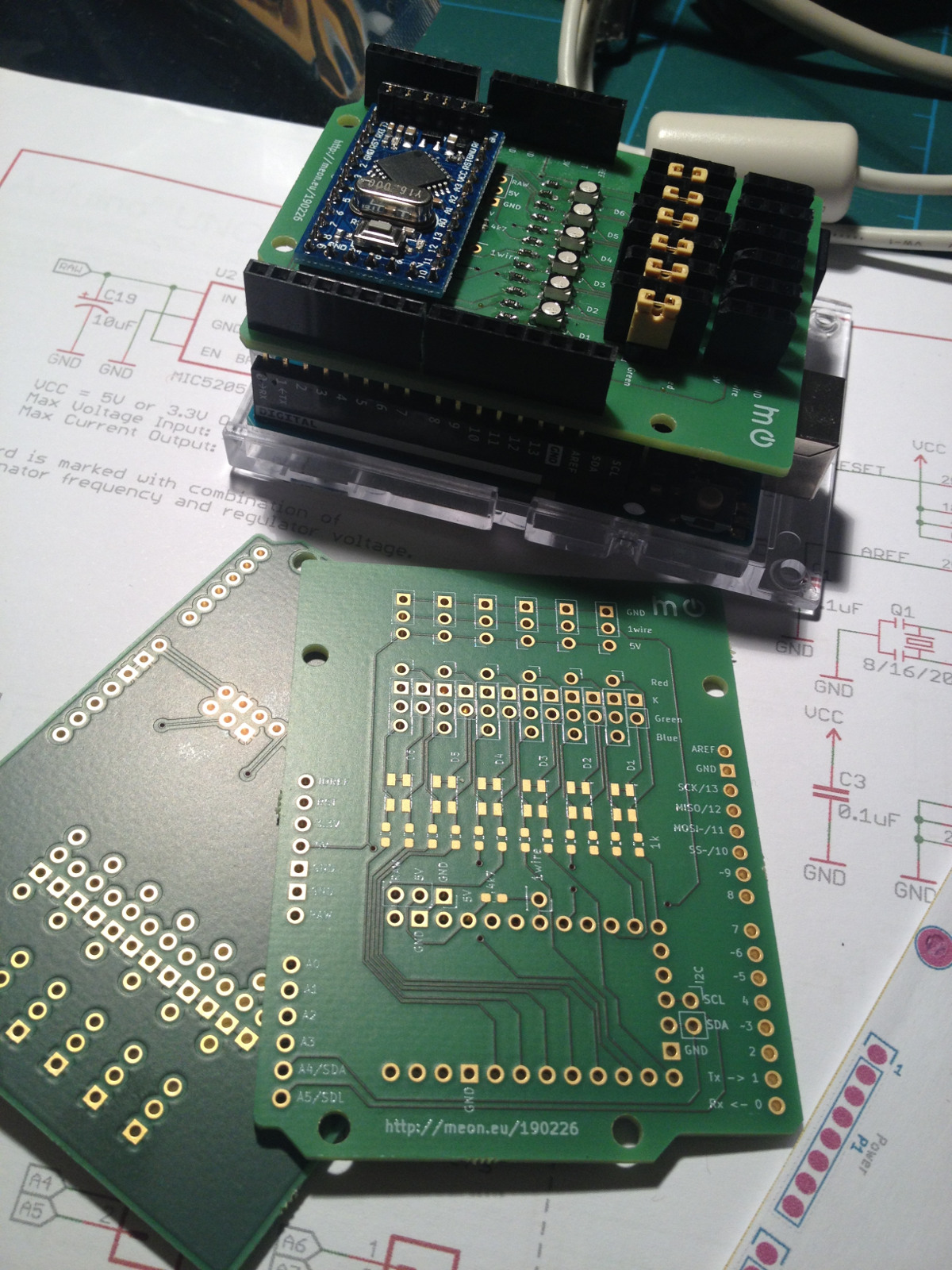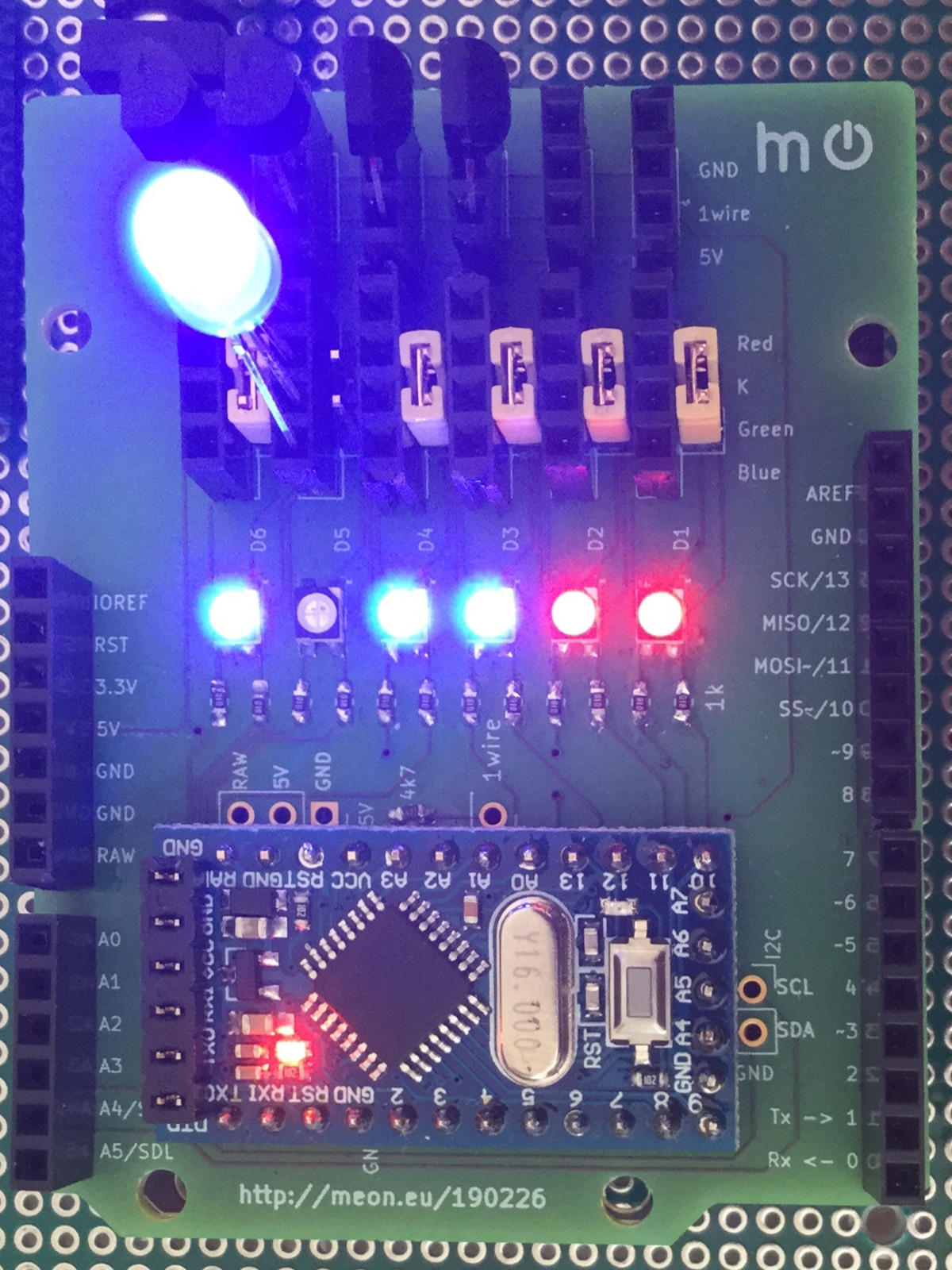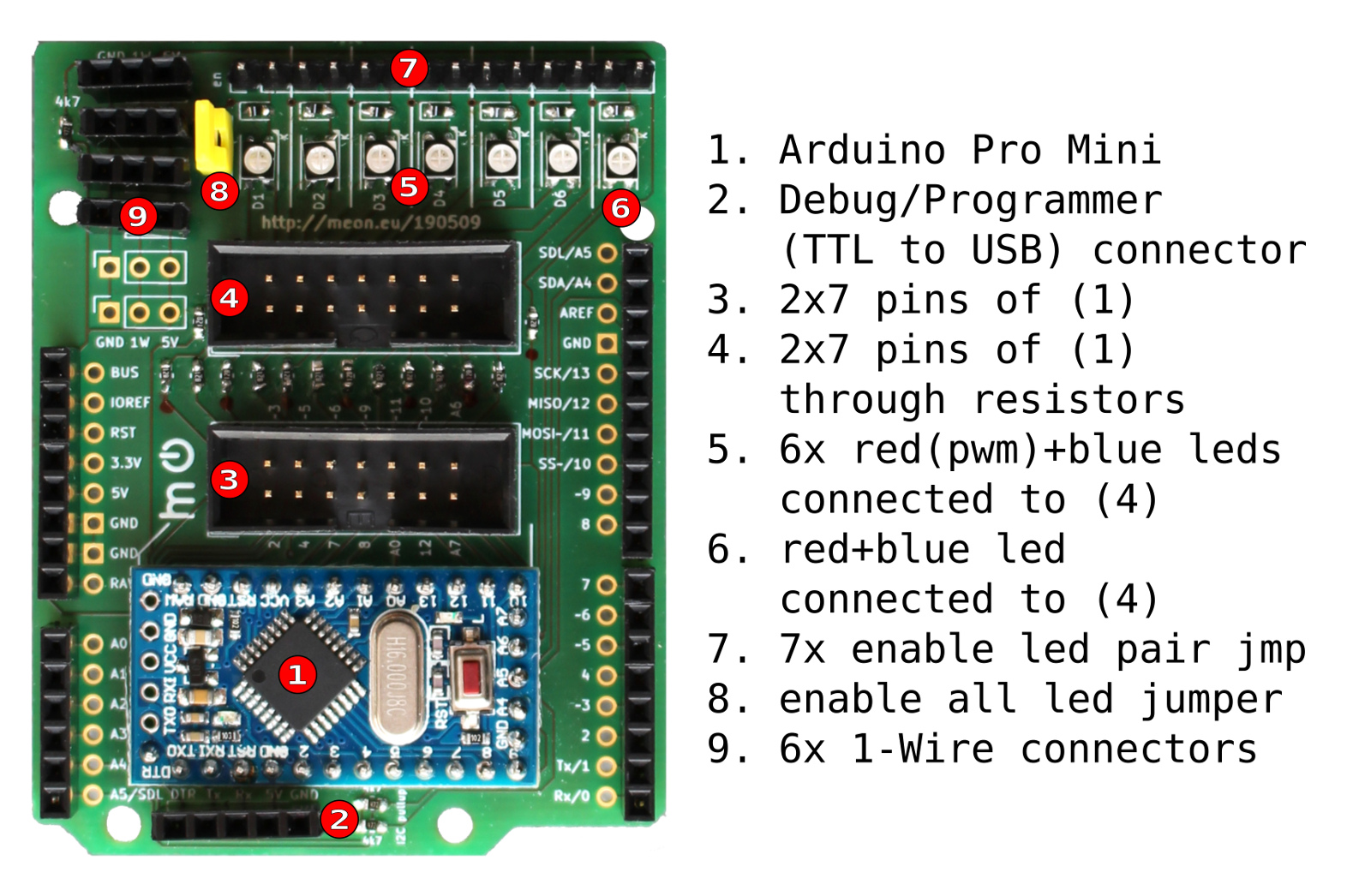6temp → six temperature measurement points, one I2C device
Needed to measure 4 water temperature points, had created Arduino shield with I2C device using ATmega328 with color led temperature indication.
first there was a prototype
Soldered together the prototype hardware and wrote firmware and I2C library for it to be used in master Arduinos.
features:
- I2C device
- fixed positions readings of up to six 1-wire temperature sensors
- visual indication of temperature or error using red(pwm)&blue(on-off) led
then Arduino UNO shield #1
Using KiCAD designed schematics and PCB:
Had to also create schematic libraries and footprints for Arduino UNO shield and Arduino Pro Mini along the way.
Sent this pcb to Aisler for manufacturing and it 100% matched the original Arduino UNO plastic holder - good job there:
features:
- standard size UNO shield PCB
- on-board R/B leds, each enabled/disabled by jumper
possible improvements:
- some pin holes unusable due to being too close to Arduino Pro Mini pcb
- 3x extra UNO pins skipped
- no second row of UNO pin holes
- 6 jumpers needed
- labels only no one side of rgb/1-wire holes
- sixtemp sensor serial cmd/debug pins only on top
- could be made into a generic 6xPWN + 6xDigital pins shield
Software
I2C slave sensor code is on GitHub with a long README. For it to work I created another two libraries: 1) Arduino-TextCMD that allows for easy defining text commands with callback functions suitable to send commands over the serial console. 2) Arduino-Uptime that allows to count uptime in seconds and check/trigger events based on seconds elapsed since timer set/reset.
I2C master (read-out) library code is on GitHub too.
What next?
Next version could be stand-alone, that is replacing the Arduino Pro Mini with a smd version of ATmega328.
The shield is not limited to measure temperature. It's basically Arduino UNO shield with I2C connected ATmega328 that has exposed pins on 2xIDC connectors and 1-wire connection. Indication leds can be soldered or skipped, resistors also and in that case when shortcut-ed there are 2 pin holes per microprocessor pin to connect something.
